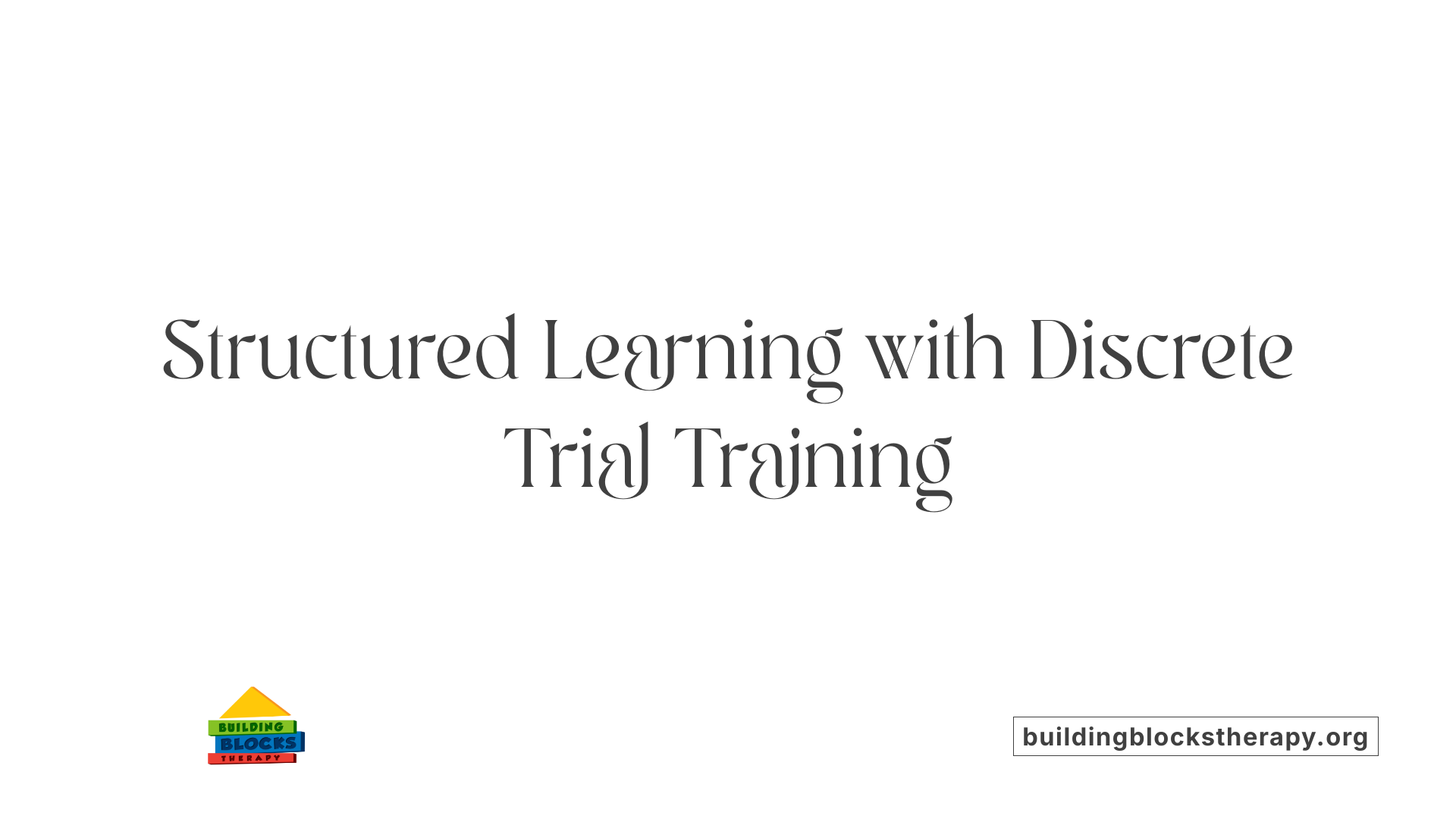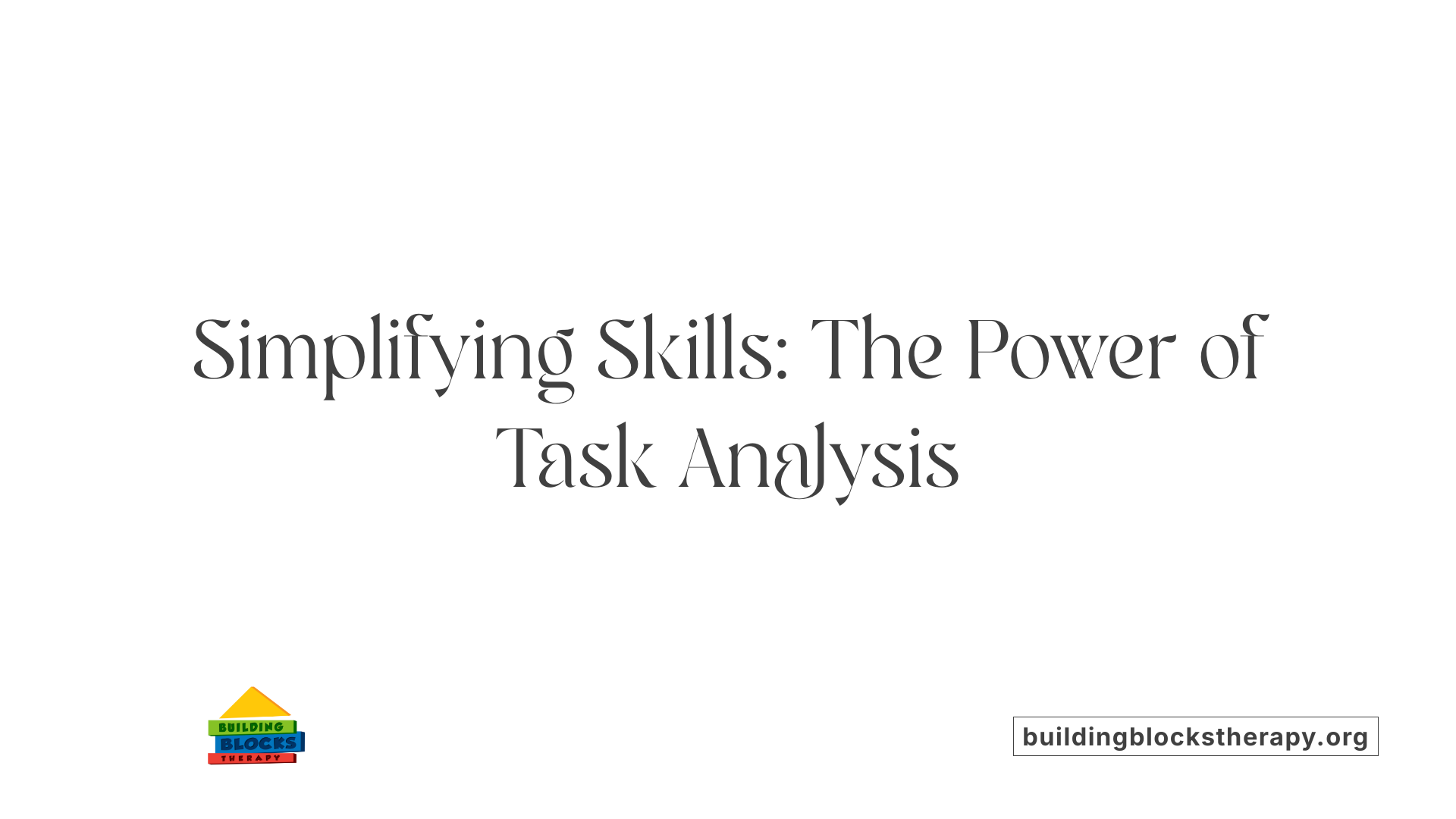Introduction to ABA and Its Role in Problem Solving
Applied Behavior Analysis (ABA) therapy is the leading scientific approach used to support individuals with Autism Spectrum Disorder (ASD) in acquiring essential life skills, including problem solving. This article explores the methodologies within ABA that foster effective problem-solving capabilities, highlighting structured teaching methods, customization of programs, and the role of professional providers. We delve into the principles that make ABA effective and address common misconceptions, benefits, and challenges associated with this intervention, providing a comprehensive narrative on how ABA empowers those with autism to navigate everyday challenges and thrive in various settings.
What is Applied Behavior Analysis Therapy and Its Impact on Autism?
Definition and scientific basis of ABA therapy
Applied Behavior Analysis (ABA) therapy is a scientifically supported method that analyzes and modifies behavior based on environmental factors. Grounded in behaviorism, ABA applies principles that encourage positive behavior changes and lessen negative or harmful behaviors. This approach is especially effective for individuals with Autism Spectrum Disorder (ASD), a complex developmental condition involving social, communication, and behavioral challenges.
How ABA helps develop communication and social skills
ABA primarily aims to improve communication abilities and social interactions for children with autism. Using strategies like discrete trial training (DTT) and incidental teaching, ABA carefully breaks down skills into manageable steps, enabling consistent learning and generalization across different situations. It fosters independence and reduces restrictive and repetitive behaviors common in ASD.
Focus on individualized, data-driven interventions
Each ABA program is personalized to a child’s unique strengths and needs. Progress is closely monitored using systematic data collection and analysis, enabling therapists to adjust interventions based on evidence. By identifying successful approaches through measurable results, ABA ensures effective and meaningful development for each learner.
Role of positive reinforcement and structured teaching methods
Central to ABA is the use of positive reinforcement, encouraging desired behaviors by rewarding them. Structured teaching methods like discrete trial training introduce skills in clear, sequential steps, supplemented by prompting and error correction when needed. These components ensure that learning is intentional, motivating, and consistently reinforced.
Settings where ABA is applied (home, school, community)
ABA therapy is versatile and delivered across multiple environments including homes, schools, and community settings. This broad application supports the generalization of learned skills, ensuring improvements are functional and relevant to everyday life.
Evidence-based effectiveness of ABA especially with early intervention
Research supports that ABA interventions provide significant benefits in teaching vital skills to children with autism, particularly when started early. Systematic data collection and professional oversight help maintain therapy quality and promote positive outcomes. Early and intensive ABA intervention is linked with greater communication, social, and adaptive skill gains, contributing to a higher quality of life and increased independence.
Who Provides ABA Therapy and Their Qualifications?

Roles of BCBAs and Registered Behavior Technicians (RBTs)
ABA therapy is primarily delivered by Board Certified Behavior Analysts (BCBAs) and Registered Behavior Technicians (RBTs). BCBAs serve as the experts who design and supervise the therapy programs, while RBTs implement these plans directly with clients under BCBA guidance. This team approach ensures both strategic oversight and consistent intervention.
Educational and Certification Requirements for ABA Professionals
To become a BCBA, individuals must obtain a master's degree in psychology, education, or a related field. They also complete 1,500 to 2,000 hours of supervised practical experience and pass a rigorous certification exam. RBTs, on the other hand, typically hold a high school diploma or equivalent and fulfill specific training and certification standards to qualify for practice.
Supervision and Ethical Standards in Practice
Both BCBAs and RBTs are bound by strict ethical guidelines to ensure client safety and effective treatment. RBTs work under continuous supervision by certified BCBAs, guaranteeing adherence to best practices. Professionals maintain their credentials through ongoing education and supervision, promoting accountability and quality.
How Professional Qualifications Ensure Quality and Effective ABA Delivery
Qualified professionals employ evidence-based strategies such as positive reinforcement to foster meaningful behavior change. Their specialized training enables them to customize interventions, assess progress systematically, and adjust methods to optimize learning outcomes. This professional rigor underpins effective therapy tailored to each individual's needs.
The Importance of Ongoing Training and Adherence to Evidence-Based Methods
The field of ABA evolves continuously based on research findings. Regular ongoing training enables practitioners to stay current with novel techniques and ethical standards. Commitment to evidence-based methods ensures interventions are both scientifically validated and safely applied, which is crucial for fostering communication, social, and daily living skills in children with autism.
Customizing ABA Programs for Individuals with Autism
How is an ABA therapy program customized for an individual with autism?
An ABA therapy program starts with a comprehensive assessment to identify a child's strengths, developmental levels, and specific challenges. This evaluation guides the creation of developmentally appropriate goals, particularly focused on early intervention for children aged 2 to 6. These assessments not only highlight areas needing support but also emphasize skills the child already exhibits, ensuring a balanced approach.
What types of interventions are used?
Customized programs often integrate play-based and naturalistic interventions. This approach makes therapy engaging and relevant by incorporating social activities like circle time, music, arts and crafts, and group play. Such activities help develop communication and social skills in an enjoyable setting, promoting relationship-building.
Skill development within the program includes social, cognitive, motor, and emotional areas, addressing comprehensive growth. Techniques like discrete trial training (DTT), modeling, and behavioral reinforcement are applied systematically to teach specific skills.
How are parents and caregivers involved?
Active involvement of parents and caregivers is essential. Through parent coaching and collaboration, families learn to support their child's learning consistently across environments, facilitating skill generalization beyond therapy sessions.
How is progress monitored and the program adjusted?
Progress is tracked through regular data collection and analysis, focusing on indicators such as increased correct responses and reduced prompts. When progress stalls, programs are adjusted by modifying instructional methods or goals, ensuring the intervention remains effective and personalized.
This individualized approach ensures children with autism receive tailored support that promotes independence, social participation, and readiness for mainstream or specialized educational settings.
Discrete Trial Training: Structured Problem-Solving in ABA

What is Discrete Trial Training (DTT) and how is it structured?
Discrete Trial Training is a structured teaching method used in Applied Behavior Analysis (ABA) therapy, especially for children with Autism Spectrum Disorder (ASD). It breaks skills into small, teachable units presented systematically to foster learning. Each DTT trial encompasses five distinct parts:
- Cue: The instruction or question posed to the learner.
- Prompt: Additional guidance given to encourage the correct response if needed.
- Response: The learner’s answer or action.
- Consequence: Feedback or reinforcement following the response.
- Intertrial Interval: A brief pause before the next trial begins.
This predictable and repetitive format helps simplify skill acquisition.
How is DTT used to teach skills and solve problems?
DTT focuses on teaching discrete skills by repeatedly presenting trials and reinforcing correct responses. This systematic approach can identify exactly where a learner is struggling, allowing targeted modifications to cues or prompts. Using DTT, therapists can pinpoint whether issues lie in understanding instructions, responding correctly, or motivation.
How is progress monitored during DTT?
Progress is typically evaluated within 8 to 10 sessions to determine if skill acquisition is satisfactory. Monitoring involves collecting data on the learner's correct responses, the level of prompting needed, and response speed. Increased accuracy, reduced reliance on prompts, and faster responses—even if correctness percentages remain modest—are all promising signs.
What indicates stalled learning during DTT?
Signs include consistently low correct response rates, inconsistent performance, and failure to generalize skills outside therapy. When progress stalls, examining antecedent factors such as the clarity of cues, prompt types, and teaching materials is crucial.
How can DTT be modified to improve outcomes?
Troubleshooting strategies include adjusting prompts, altering reinforcement schedules, implementing error correction procedures, or switching instructional formats like using video modeling. A critical element is planning for generalization by practicing skills across varying settings, people, and stimuli.
Overall, DTT offers a structured framework for teaching and troubleshooting by systematically analyzing each component of a trial and adapting techniques to the individual learner's needs.
Task Analysis: Breaking Down Complex Skills for Better Learning

What is task analysis and why is it used in ABA?
Task analysis in ABA is a teaching strategy that involves breaking down complex activities into smaller, manageable steps. This method simplifies learning by allowing children with autism to master each step systematically, promoting overall skill acquisition and independence.
How are tasks broken into teachable steps?
Each task is divided into discrete, clearly defined components that can be taught one at a time. This segmentation ensures consistent, individualized instruction tailored to the learner’s needs.
What techniques are used in task analysis?
Techniques such as forward and backward chaining link individual steps together, while modeling demonstrates the desired behavior or skill. These approaches help children understand the sequence of actions required to complete tasks successfully.
How is task analysis applied to daily living and self-care?
Common skills like teeth brushing, hand washing, dressing, and eating are broken down into simple steps. Visual aids and chaining methods facilitate learning these self-care routines, which are essential for enhancing daily independence.
What role does task analysis play in reducing maladaptive behaviors?
By teaching functional skills through structured steps, task analysis replaces problem behaviors with positive, practical actions. Reinforcement and self-monitoring strategies encourage sustained behavior change.
How does task analysis support generalization of skills?
Practicing skills across different settings and using varied stimuli helps children apply what they learn beyond the therapy environment, promoting adaptability and real-world functioning.
The Role of Reinforcement and Motivation in ABA-Based Problem Solving
What Are Positive and Negative Reinforcement Principles?
In ABA therapy, reinforcement is a core behavioral strategy aimed at increasing specific behaviors. Positive reinforcement involves adding a pleasant stimulus after a desired behavior to encourage its recurrence. For example, giving praise or a small reward when a child completes a task correctly. Negative reinforcement involves removing an unpleasant stimulus following a desired behavior, such as turning off a loud noise once the child complies with instructions.
How Is Reinforcement Used to Increase Desirable Behaviors?
Reinforcement is systematically applied to strengthen target behaviors in ABA interventions. When a child with autism responds correctly during discrete trial training or demonstrates improved social skills, therapists use positive reinforcement to encourage repetition. Conversely, negative reinforcement may be deployed to help the child learn adaptive behaviors that reduce aversive stimuli, fostering a better learning environment.
How Does Reinforcement Support Learning and Motivation?
Reinforcement enhances motivation by providing immediate, tangible feedback that connects effort with positive outcomes. This boosts engagement and persistence in learning tasks. As children experience success and positive outcomes, their willingness to participate increases, facilitating faster skill acquisition and generalization across different settings.
Balancing Reinforcement with Ethical and Individualized Approaches
Effective ABA incorporates reinforcement strategies tailored to each child's preferences, strengths, and developmental level. Ethical practice avoids punitive measures and emphasizes reinforcing meaningful, socially relevant skills. Therapists ensure reinforcement procedures are respectful, purposeful, and balanced with enjoyable activities, such as play-based therapy, to maintain a positive and safe learning environment.
Examples of Reinforcement Applied to Problem-Solving Tasks in ABA
In problem-solving tasks, such as teaching task analysis steps for daily activities, therapists provide positive reinforcement like verbal praise when the child completes a step correctly. When the child demonstrates reduced problem behaviors during intervention, reinforcement schedules are adjusted to maintain motivation. Data collected helps guide reinforcement modifications to optimize learning and address any behavioral challenges effectively.
| Aspect | Description | Example |
|---|---|---|
| Positive Reinforcement | Adding a pleasant stimulus to increase behavior | Rewarding with a favorite toy after a successful task completion |
| Negative Reinforcement | Removing an unpleasant stimulus to increase behavior | Ending a demanding task upon correct response |
| Ethical Individualization | Customizing reinforcement to respect child's needs and preferences | Using preferred activities or items identified for each child |
| Motivation Support | Reinforcement fostering engagement and persistence | Immediate praise and token systems during discrete trial sessions |
| Problem-Solving Application | Reinforcement applied during learning of complex tasks and behavior management | Praise after correctly chaining steps in hand washing; adjusting reinforcement after behavior reduction |
Generalization: Extending Problem-Solving Skills Beyond Therapy

Why is planning for generalization important in ABA?
Building skills during therapy sessions is vital, but ensuring these skills transfer to real-life situations is equally crucial. Without planned generalization, newly acquired behaviors may only occur in the therapy setting, limiting their practical value. A deliberate plan helps children apply problem-solving skills across various environments, making learning meaningful and functional.
How can skills be practiced across different settings, stimuli, and people?
Effective generalization requires practicing learned behaviors in diverse contexts. This involves:
- Conducting sessions in various locations like home, school, and community settings.
- Using different people, including family members, teachers, and therapists, to prompt and reinforce skills.
- Introducing varied stimuli to mimic real-life unpredictability.
These variations help children adapt their problem-solving skills beyond structured therapy.
What strategies promote the transfer of learning?
Several approaches can foster generalization:
- Gradual fading of prompts to encourage independent responding.
- Use of naturalistic teaching methods, such as incidental teaching, alongside structured trials.
- Incorporation of play-based learning to increase motivation and engagement.
- Fun and meaningful activities that replicate everyday challenges.
These strategies support children in using their skills spontaneously.
What challenges arise from limited generalization, and how can they be addressed?
When generalization is limited, children might perform skills well only in therapy but struggle in other settings. Signs include inconsistent behavior and failure to apply problem-solving in daily life. Addressing this requires reviewing instructional materials, prompts, and reinforcement methods, and modifying them as needed. Introducing real-life stimuli and promoting practice in multiple environments can overcome these barriers.
How does generalization relate to meaningful real-life problem solving?
Generalization ensures that problem-solving skills taught in therapy translate to everyday challenges. It empowers children to independently navigate social interactions, manage routines, and adapt to new situations. Ultimately, it supports the goal of ABA therapy: enhancing communication, social behavior, and independence, leading to a better quality of life.
Addressing Behavioral Challenges During ABA Intervention
Why Is Collecting Behavioral Data Important During Therapy?
During ABA intervention, especially discrete trial training, children may exhibit increased problem behaviors. Collecting detailed behavioral data is essential. It helps therapists identify patterns, triggers, and consequences of these behaviors, providing a clearer picture of what might be reinforcing them. Without systematic data, it’s difficult to tailor strategies effectively.
How Are Problem Behaviors Analyzed in Relation to Learning?
Behaviors are typically analyzed through the functions they serve—whether to gain attention, escape a demand, seek sensory stimulation, or access tangibles. By recognizing these antecedents and consequences, ABA practitioners can understand how learning tasks or environmental factors may unintentionally contribute to problem behaviors.
How Can Intervention Strategies Be Adjusted Based on Behavioral Data?
Once behavior functions are identified, therapists can modify intervention methods. This might involve changing prompts, adjusting reinforcement schedules, or incorporating alternative teaching formats such as video modeling. For instance, reducing task difficulty or increasing positive reinforcement can decrease frustration-related behaviors.
How Does Behavioral Data Help Reduce Problem Behaviors?
Data-driven adjustments ensure that interventions are responsive rather than reactive. For example, measuring response rates and tracking behavior frequency allows therapists to detect early signs of escalating problem behaviors and implement tailored supports. This proactive approach reduces behavior occurrences and helps maintain a positive learning environment.
How Are Safe and Individualized ABA Practices Used to Manage Behaviors?
ABA therapy that emphasizes individualized, evidence-based approaches avoids punitive measures and focuses on reinforcing positive behavior and building skills. Ensuring therapy balance with play, parental involvement, and ongoing monitoring supports both behavioral improvements and the child’s overall well-being. Such safe practices promote sustainable skill development and respect neurodiversity.
Staff Training and Fidelity in ABA Instruction
Why is staff training essential in ABA methods like discrete-trial and incidental teaching?
Staff training is crucial because it equips instructors with the necessary skills to deliver ABA interventions accurately and effectively. Training in methods such as discrete-trial teaching and incidental teaching helps staff understand structured approaches to skill acquisition and behavior change, ensuring children with autism receive consistent, evidence-based instruction.
How do training and performance feedback affect teaching accuracy?
Research shows that individual training sessions combined with performance feedback significantly improve instructors' accuracy. Performance feedback allows staff to identify areas of strength and those needing improvement, reinforcing correct implementation and promoting skillful delivery of therapeutic strategies.
How is delivery consistency and effectiveness ensured?
Ensuring consistent and effective ABA intervention involves systematic data collection and ongoing supervision. Regular monitoring of staff performance allows for timely adjustments and reinforces adherence to treatment protocols, which minimizes variability in instruction across sessions and therapists.
What is the impact of implementation fidelity on therapy outcomes?
Implementation fidelity directly correlates with therapy success. High fidelity ensures that interventions are delivered as designed, maximizing the likelihood of meaningful progress for children. Conversely, poor fidelity can lead to reduced skill acquisition and less reliable behavior change.
What professional development supports high standards in ABA instruction?
Continuous professional development, including refresher trainings and workshops, helps maintain and enhance instructional competencies. Certifications, such as those offered by ABA Australia, support adherence to recognized standards and encourage ethical, individualized, and research-informed practices.
| Topic | Description | Impact on ABA Therapy |
|---|---|---|
| Staff Training | Focus on discrete-trial and incidental teaching methods | Improves technique accuracy and learner outcomes |
| Performance Feedback | Individualized feedback sessions | Enhances fidelity, skill acquisition |
| Consistency in Delivery | Monitoring and supervision to uphold treatment protocols | Ensures reliable, steady progress |
| Implementation Fidelity | Adherence to prescribed methods and protocols | Critical for effective behavioral change |
| Professional Development & Certification | Ongoing education and voluntary certification programs | Maintains quality standards and ethical practice |
Play-Based ABA: Integrating Fun to Enhance Problem Solving
Role of play as a fundamental learning tool
Play is a natural way children learn, explore, and understand their environment. In ABA therapy, incorporating play makes learning more engaging, helping children with autism develop essential skills in a setting that feels enjoyable and comfortable.
Types of play used in ABA
ABA therapy uses various types of play to target specific developmental goals:
- Structured play: Guided activities with clear rules and goals, helping children focus on learning tasks.
- Functional play: Using toys or objects in typical ways to develop practical skills.
- Social play: Interaction with peers or adults to improve communication and social behaviors.
- Guided free play: Allowing children some choice and creativity within a supportive framework.
Benefits of play-based ABA
Integrating play enhances several areas:
- Communication: Play provides natural contexts to practice language and verbal skills.
- Engagement: Fun activities sustain attention and interest throughout therapy.
- Behavioral reinforcement: Play can reward positive behaviors, increasing the chances they will be repeated.
Using play to increase motivation and skill generalization
Because play is enjoyable, it boosts children’s motivation to participate actively in therapy. It also encourages practicing skills in varied and real-life settings, aiding generalization beyond therapy sessions.
Implementing play-based techniques across therapy settings
Play-based ABA methods are versatile and can be used effectively at home, school, or therapy centers. This flexibility ensures consistent skill-building while making therapy an enjoyable part of daily life.
Common Misconceptions About ABA Therapy Explained
What are some common misconceptions about ABA therapy for autism?
Applied Behavior Analysis (ABA) therapy is often misunderstood, leading to several widespread misconceptions.
One frequent myth is that ABA is punishment-based and overly rigid. In truth, modern ABA emphasizes positive reinforcement to encourage desired behaviors rather than punishing negative ones. The approach is highly individualized and adapts to each child's unique needs and strengths, avoiding a "one-size-fits-all" strategy.
Another misconception is that ABA attempts to change a person's fundamental personality or who they are. Instead, ABA focuses on teaching specific skills such as communication, social interaction, and daily living tasks, while reducing behaviors that interfere with learning or safety. The goal is to help individuals better navigate daily life, not to alter their identity.
People often assume ABA is suitable only for young children. However, ABA methods are flexible and can be tailored for individuals across all age groups, including teenagers and adults, providing ongoing support for skills development.
Concerns about behavioral control and acceptance of neurodiversity exist as well. Current ABA practices prioritize respect, flexibility, and family collaboration. Safe ABA therapy is balanced with play and relaxation, promotes strengths, and involves caregivers to ensure interventions are meaningful and supportive.
Overall, ABA is a data- and research-driven approach that aims to improve socially significant behaviors ethically and effectively, dispelling the notion that it is punitive or inflexible.
Benefits and Challenges of ABA Therapy in Problem Solving
What Are the Benefits of ABA Therapy for Individuals with Autism?
ABA therapy is widely recognized for its effectiveness in improving communication, social interaction, and daily living skills such as hygiene and self-care. It uses a scientifically validated, evidence-based framework that relies heavily on individualized planning tailored to the child’s unique strengths and challenges. The approach systematically breaks down complex skills into manageable steps, promoting independence and reducing maladaptive behaviors through positive reinforcement.
One of the standout benefits is the impact of early intensive intervention. Research shows that children who receive ABA therapy early on experience significant gains in language development and social skills. Additionally, ABA techniques like discrete trial training and task analysis help teach both foundational and practical skills in a structured way.
What Challenges May Arise with ABA Therapy?
ABA therapy demands considerable time and consistency, often requiring daily sessions over months or years to see meaningful progress. This commitment can be challenging for families to maintain. Moreover, the therapy's highly structured and repetitive nature sometimes raises concern about its intensity and the focus on behavior modification. It is important to balance rigorous instruction with play and relaxation to keep children engaged and motivated.
How Can Collaboration Enhance ABA Success?
The success of ABA therapy depends heavily on collaboration among therapists, families, and educators. Training staff in ABA techniques and providing ongoing performance feedback improves implementation fidelity, ensuring that interventions meet quality standards. Additionally, involving parents by encouraging participation and questions helps them monitor progress and advocate for adjustments if necessary.
Such coordinated efforts ensure the therapy remains meaningful, supportive, and respectful of neurodiversity, promoting safe and effective outcomes. When these factors align, ABA therapy becomes a powerful tool to support problem solving and skill development in individuals with autism.
Ethical and Safe Practices in ABA Therapy
Core principles of individualized, strength-focused, and safe ABA
Ethical ABA therapy prioritizes tailoring interventions to the unique needs and strengths of each child. This individualized approach ensures that therapy is meaningful and supportive rather than rigid or harmful. Safety is a fundamental principle, with a balance maintained between structured learning and opportunities for play and relaxation.
Avoidance of punishment-focused and one-size-fits-all methods
Safe and ethical ABA practices avoid punishment or approaches focused solely on stopping behaviors without teaching new skills. One-size-fits-all methods that fail to recognize individual differences can cause harm, making personalized strategies essential to respect each child's developmental profile.
Parental involvement and monitoring
Parents are encouraged to actively participate in therapy sessions and regularly monitor progress. They should ask questions, stay informed about methods used, and have the authority to pause or cease therapy if they observe harm or lack of progress.
Recognition of neurodiversity and respect for individuality
Respecting neurodiversity means accepting and valuing the child’s unique ways of thinking and behaving, rather than enforcing neurotypical appearances or behaviors. Ethical practices promote acceptance and support self-expression while fostering skill development.
Voluntary certification standards and lack of regulation in some regions
While some areas, such as Australia, lack formal government regulation for ABA practitioners, voluntary certification programs exist to uphold minimum standards of safety and ethics. Families and practitioners benefit from seeking certified professionals who commit to best practices and ongoing training.
Theoretical Foundations: Behaviorism and ABA

What is Behaviorism and How Does it Underpin ABA?
Behaviorism is a learning theory that focuses on observable behaviors and the ways they are influenced by environmental stimuli. Applied Behavior Analysis (ABA) builds directly on behaviorism by applying its principles to teach new skills and modify behaviors in individuals, especially children with autism.
How Are Antecedents and Consequences Used to Shape Behavior?
In ABA, therapists carefully analyze antecedents (what happens right before a behavior) and consequences (what follows) to understand the triggers and outcomes that influence behavior patterns. This analysis guides the development of tailored strategies to reinforce positive behaviors and reduce negative ones.
How Are Strategies Developed to Promote Positive Behavior and Skills?
Using the data collected about antecedents and consequences, ABA practitioners create interventions that reinforce desirable behaviors, teach new skills, and replace problematic behaviors with functional alternatives. Techniques like discrete trial training and task analysis break complex skills into manageable steps, promoting learning and mastery.
How Does ABA Consider Environmental Influences?
ABA emphasizes that behaviors are often shaped by environmental factors. By modifying instructional materials, prompts, reinforcement methods, and the settings where learning occurs, therapists can create supportive environments that maximize skill acquisition and behavior change.
What Are the Socially Relevant Goals of ABA?
ABA’s ultimate objective is to enhance socially significant behaviors, such as communication, social interaction, and daily living skills. By focusing on meaningful, practical skills, ABA interventions help individuals with autism engage more fully in their communities and improve their quality of life.
Using Systematic Troubleshooting to Support ABA Learning
Analyzing Cue, Prompt, and Instructional Conditions When Progress Stalls
When a child shows limited progress in discrete trial training (DTT), it is essential to carefully examine antecedent components such as discriminative stimuli, prompts, and instructional materials. These elements serve as cues and supports that guide the child’s responses. By analyzing whether these conditions are clear and appropriate, practitioners can identify factors that may be hindering skill acquisition.
Modifying Reinforcement and Correction Procedures
Adjusting reinforcement strategies is vital when progress stalls. This may include changing the type, timing, or frequency of positive reinforcement to better motivate the child. Similarly, error correction procedures can be modified to provide clearer feedback or use less intrusive prompts. These changes aim to optimize learning and reduce frustration.
Incorporating Alternative Teaching Formats Like Video Modeling
Introducing alternative instructional formats, such as video modeling, can complement traditional discrete trial instruction. Video modeling uses visual examples to demonstrate the target behavior, which can enhance understanding and promote quicker learning, especially for children who respond well to visual stimuli.
Data-Driven Troubleshooting Techniques to Improve Skill Acquisition
Systematic data collection and analysis are central to troubleshooting in ABA therapy. By tracking correct responses, prompting levels, and response times, therapists can detect patterns and make evidence-based decisions to adjust programming. This continuous monitoring guides modifications tailored to the learner’s needs.
Resolving Instructional and Behavioral Challenges Through Systematic Analysis
Behavioral data help identify if problem behaviors emerge due to instructional difficulties or unmet needs. Function-based analysis enables individualized adjustments to teaching strategies or environmental conditions. This systematic approach has proven effective in overcoming barriers and promoting consistent progress in children with autism.
Monitoring Progress in ABA: Data-Driven Decision Making
Collection and Analysis of Behavioral Data
In Applied Behavior Analysis (ABA) therapy, consistent collection and analysis of behavioral data form the foundation for effective progress monitoring. This data-driven practice enables therapists to objectively track skill acquisition, response accuracy, and behavior changes over time. Data encompasses correct responses, prompt levels required, response times, and behavioral incidents, providing a comprehensive picture of the learner's performance.
Criteria for Satisfactory Progress
Satisfactory progress in ABA therapy typically emerges within 8-10 training sessions. Positive indicators include increased correct responses, reduced dependence on prompts, and faster response times. These outcomes signal meaningful learning and skill mastery, even if overall percentages remain modest. Such progress informs therapists that current instructional strategies are effective and should continue.
Indicators of Stalled or No Progress
Conversely, stalled progress is characterized by persistently low correct response rates and inconsistent or variable performance. Limited generalization of skills outside structured intervention settings also indicates a need for review. These signs suggest that ABA programs may require modification to better suit the learner’s needs or that instructional methods need adjustment.
Using Data to Adjust Instructional Strategies and Goals
Behavioral data analysis allows precise troubleshooting of intervention components, such as the effectiveness of discriminative stimuli, prompt types, reinforcement schedules, and error correction procedures. Adjustments might include changing prompts, incorporating alternative formats like video modeling, or modifying reinforcement strategies. Staff training on these adaptations can improve the fidelity and impact of ABA procedures.
Ensuring Meaningful Skill Generalization
A critical objective beyond initial skill acquisition is ensuring that learned behaviors generalize across settings, people, and stimuli. Therapists design generalization plans that intentionally practice skills in varied environments. This guarantees that progress in data collection translates into practical, functional abilities that support daily living and social integration.
| Aspect | Description | Importance |
|---|---|---|
| Behavioral Data Collection | Systematic tracking of responses, prompts, and behaviors | Foundation for objective progress monitoring |
| Satisfactory Progress Signs | Increased correct responses, reduced prompts, faster responses | Confirms effectiveness of interventions |
| Indicators of No Progress | Low accuracy, variable responses, poor generalization | Signals need for instructional modifications |
| Instructional Strategy Adjustment | Changes to prompts, reinforcements, or teaching formats | Enhances learning and addresses barriers |
| Generalization Planning | Practicing skills across settings and contexts | Ensures real-world applicability of skills |
Conclusion: Empowering Problem Solving Through ABA
Teaching problem-solving skills through Applied Behavior Analysis combines science, structure, and individualized care to foster meaningful growth for individuals with autism. By utilizing evidence-based methods such as discrete trial training and task analysis, and emphasizing positive reinforcement and generalization, ABA supports development beyond therapy settings. The involvement of qualified professionals, ongoing monitoring, ethical practices, and integration of play-based techniques further enhance the therapy’s effectiveness. While challenges exist, they can be addressed through collaboration and adaptation to each individual's needs. Ultimately, ABA’s comprehensive approach equips individuals with autism to navigate their environments more effectively, enhancing independence, communication, and social participation in daily life.
References
- A model for problem solving in discrete trial training ...
- Applied Behavior Analysis: Teaching Procedures and Staff ...
- Task Analysis in ABA Therapy: Strategies and Examples
- Applied Behaviour Analysis (ABA) and autistic children
- The Role of Play in ABA Therapy: Making Therapy Fun
- How to Become an ABA Therapist - School of Education
- Board Certified Behavior Analysts (BCBA)






